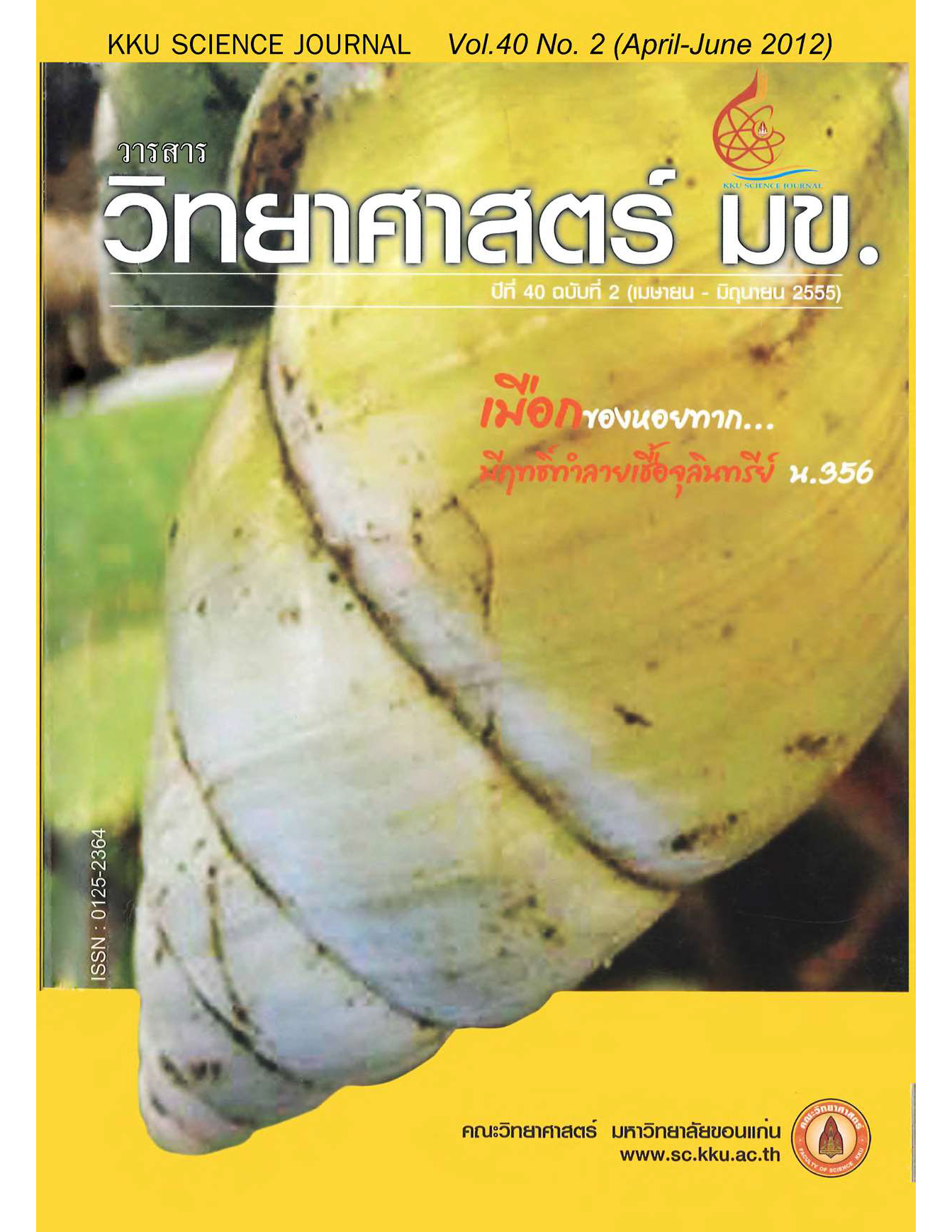Biology of Terrestrial Snail Secretion and Application
Main Article Content
Abstract
The snail mucus is excreted from the cells in the epithelium of the skin, foot and body that call pedal mucus and viscous mucus, respectively. For the purpose of adhesive locomotion, mating, hunting, and maintain moisture in hibernation, especially a thin layer of pedal mucus is secreted for crawling. Whilst, the viscous mucus are a thick layer and high concentration excreted from body skin. The viscosity of mucus is highly depends on its bipolar ion content, which can vary between species and with the physiological condition of the animal. The rate of mucus excretion is controlled by neurohormone. Snail mucus consists of a liquid, and granules. The number of granules is directly proportional to the weight of the mucus. The major biochemical component of snail mucus is a complex glycoconjugates molecules contain sulfate sugar or carbohydrate chains, globular soluble proteins, uronic acid and oligoelements. The important role of antibiotic peptide such as mucin of the snail mucus exhibited positive antibacterial activity both for the Gram positive and Gram negative bacteria. Moreover, antimicrobial peptides (AMPs) are important to immune defense by acting not only as natural antibiotics but also stimulate many elements of the immune system, including barrier repair and inflammatory cell recruitment. Currently, there are many the applications of snail mucus in various industries, such as increased skin care products and glue proteins.
Article Details

This work is licensed under a Creative Commons Attribution-NonCommercial-NoDerivatives 4.0 International License.


